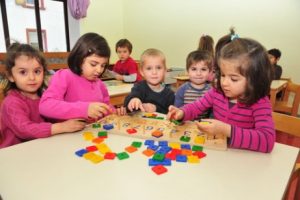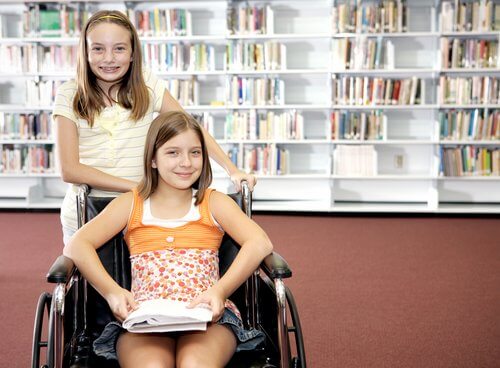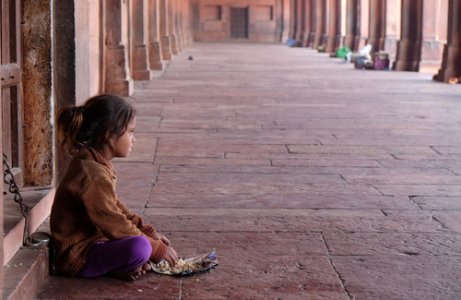What Is Inclusive Education?

Inclusive education isn’t about making children fit into a certain system and structure of society. It’s actually the opposite: inclusive education consists of transforming education systems so that children of different cultures, backgrounds and capacities can all adapt well.
Inclusive education is a process that aims to improve the overall educational system in order to cater to all children. To meet this end, education centers or schools must be converted into places that are able to care for all learners.
What does inclusive education imply?
In order for inclusive education to exist, study opportunities must be provided for all children without any distinction or difference. Especially for those who belong to a group of ethnic origin, rural or are handicapped or have a learning disability, due to which they tend to be excluded.
The mission is that everyone, without exception, can acquire knowledge and develop their skills. In addition, it seeks to create habits that contribute to the mental and social well-being of each child.
In other words, inclusive education consists of offering special education in educational centers or regular schools. To make this possible and give the expected results, the institution should be systematically organized and receive financial aid to be able to provide physical accessibility.
Likewise, it must also count on the support that this education has proposed.

Characteristics of a school with inclusive education
An educational institution must be characterized by eliminating any obstacle or barrier that impedes participation and learning. This doesn’t only apply to children, but also to families, who must actively participate in the educational center and their children’s learning.
A school with inclusive education must meet the following characteristics:
- Focus on children’s capabilities.
- No requirements or selection process for a child to enter.
- Seek to improve the quality of life of children and families.
- Have a relationship of collaboration with families, based on respect and empathetic attitudes.
- Have a teaching staff that provides support for students in their learning process.
- Allow children to have their own voice with a critical and cooperative spirit.
- Respect is one of the main foundations in their teaching and learning process.
- The education system is characterized by being comprehensive, multidisciplinary and critical.
- Although the process of evaluation of the students is done in a general way, the capacities of each one are taken into account individually.
“Inclusive education seeks to create habits that contribute to the child’s mental and social well-being”
Strategies to include children affected by exclusion
UNESCO has created different strategies and guidelines for the three groups of children affected by social exclusion. To seek the maximum development and potential of these children, the following strategies have been presented:
Children from the street
Education is the only totally effective means to socially reintegrate these children. The activities of inclusive education should be characterized as follows:
- Raise awareness about the conditions of these children and their right to receive education as others do.
- Provide technical support to institutions or organizations that involuntarily meet the basic needs of these children.
- Strengthen the initiatives with financial support, in order for the public and private sectors’ support to be constant and effective.

Children who work
One of the obstacles that arises is the large number of children that don’t attend school because they have to go to work. That’s why education is a fundamental tool to prevent child labor.
“Free and compulsory education, at least up to a minimum age, is a basic right for every person”
Children with disabilities
Many children who have a disability or learning difficulty aren’t schooled because their parents don’t think it’s necessary. This is a serious mistake: early education is very important for children. In these cases, inclusive education guarantees the greatest effort and means to offer:
- Necessary support to all students who have special educational needs to integrate as well as possible.
- Professional staff trained in teaching children with disabilities or learning disabilities.
On the other hand, the children of indigenous populations and people from rural areas are also affected by not having a school or teachers who can provide them with education. This is another group of children who should be considered for this type of education
Finally, inclusive education seeks to make freedom of knowledge enjoyable by everyone and not leave anyone aside because they’re socially different or have a disability.
From home, family members can be made aware so that they can accept the differences among each human being and, in this way, promote equality.
All cited sources were thoroughly reviewed by our team to ensure their quality, reliability, currency, and validity. The bibliography of this article was considered reliable and of academic or scientific accuracy.
- Arnaiz Sanchez, P. (2007). La educacion inclusiva: dilemas y desafios. Educacion, Desarrollo y Diversidad.
- Buey, M. . L. D. (2010). Educacion Inclusiva. Revista Española de Orientación y Psicopedagogía. https://doi.org/10.5944/reop.vol.21.num.2.2010.11538
This text is provided for informational purposes only and does not replace consultation with a professional. If in doubt, consult your specialist.








